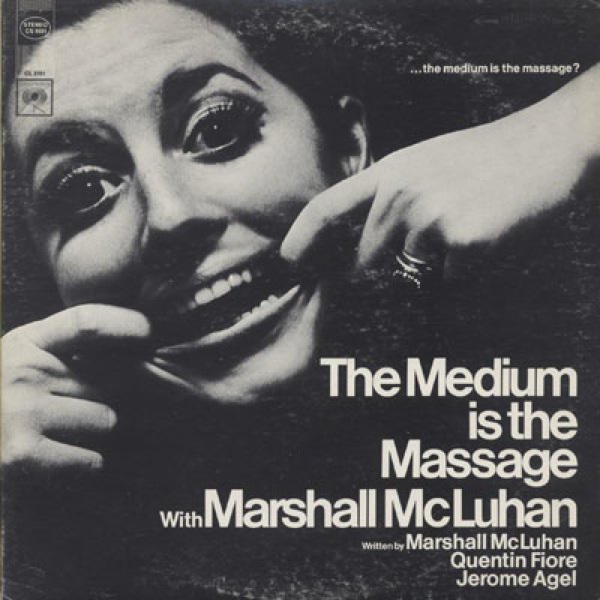






 from the official press release:
from the official press release:
I believe that our tale of PINOCCHIO recaptures the darker, more daunting aspects of the book that have been missing from previous film incarnations and takes advantage of all the allegorical aspects of the tale. Gris and Mark have a clear vision of this world. Matthew, the directors and I have constructed an adaptation that I feel enormously proud of.
found via iwatchstuff
Why should art and culture suddenly become very big business, like big science? Well, the reasons are tied up with the fact that we are living in an information age. When you live in an information age, culture becomes big business, education becomes big business, and the cultural explosion, or the information explosion becomes itself culture.
- McLuhan
You mean life isn't a fountain?
Education must shift from instruction, from the imposing of stencils on brainpans as it were, to discovery. To probing and exploring and to the recognition of the language of forms. We have now to accept the fact and responsibility that the entire human environment is an artifact, an art form, something that can be staged and manipulated like showbiz.
-McLuhan
 Below are parts one and two of the 1968 experimental audio collage LP based on The medium is the massage, which you can also find here. It's hilarious, enlightening and bewildering in equal measure. The more you listen to McLuhan speak in interviews, the more you can make out of not only what is said the disc, but how it is said. Example one being that the last 'point' McLuhan makes in the above trailer - "we are not sure who discovered water, but we're pretty sure it wasn't the fish" - is reiterated in Part one at 6:03 in a daffy duck-like voice. Which came first?
Below are parts one and two of the 1968 experimental audio collage LP based on The medium is the massage, which you can also find here. It's hilarious, enlightening and bewildering in equal measure. The more you listen to McLuhan speak in interviews, the more you can make out of not only what is said the disc, but how it is said. Example one being that the last 'point' McLuhan makes in the above trailer - "we are not sure who discovered water, but we're pretty sure it wasn't the fish" - is reiterated in Part one at 6:03 in a daffy duck-like voice. Which came first?"Writing did not merely record language, it was a totally new medium of expression and communication which the spoken word in turn came to imitate. Writing encouraged an analytical mode of thinking, with emphasis upon lineality...(interruption "Once more please")"I... trouble is, I keep thinking of improvements on these passages all the time... With emphasis in lineality, continuity and connectedness. In other words, visuality."
'We don't know really what happened in the Korean war, in the way we know what happened in the Vietnam war because there was very little photographic and television coverage... in a certain sense the things we pay attention to now are the things that are photographed.'
 Caricatures by Alick P.F. Ritchie (1868-1938) from 1926. There's a full set of 50 characters which you can see of the site of the National Portrait Gallery, along with other drawings from the Ritchie oeuvre.
Caricatures by Alick P.F. Ritchie (1868-1938) from 1926. There's a full set of 50 characters which you can see of the site of the National Portrait Gallery, along with other drawings from the Ritchie oeuvre. 


Day & night from JuanPStark on Vimeo.
Good enough things cannot be said about Teddy Newton's Night and Day. The interplay between the style and feel of old school character animation and the possibilities of contemporary digital animation is seamless. The narrative is simple but encompasses themes of bothhuman nature and nature itself. I watch it and think only of the beauty of what's varied and different in life.
Fear of the unknown.
They are afraid of new ideas.
They are loaded with prejudices, not based upon anything in reality, but based on… if something is new, I reject it immediately because it’s frightening to me. What they do instead is just stay with the familiar.
You know, to me, the most beautiful things in all the universe, are the most mysterious.
-Dr. Wayne Dyer
 The top image is a concept art piece done for 1001 Dalmatians probably circa 1958. The artist is unknown, but could be by Disney storyman Bill Peet. Below are colour swatches by the film's colourist, Walt Pregory.
The top image is a concept art piece done for 1001 Dalmatians probably circa 1958. The artist is unknown, but could be by Disney storyman Bill Peet. Below are colour swatches by the film's colourist, Walt Pregory.




When cartoonist hero Chris Ware (Jimmy Corrigan, the Smartest Kid on Earth) was asked to create the poster for Palme d'Or winner Uncle Boonmee Who Can Recall His Past Lives, he knew it would be a challenge — and not just because Apichatpong Weerasethakul's Thai ghost story famously features a scene of princess-on-catfish coitus. "I wanted to get at both the transcendent solemnity of the film while keeping some sense of its loose, very unpretentious accessibility," says Ware. "This being a poster, however — and even worse, me not really being a designer — I realized it also had to be somewhat punchy and strange, so as to draw viewers in and pique their curiosity without, hopefully, insulting their intelligence." via VULTURE

 The Criterion Collection restore, reissue and, in a way, rebrand cult classics and art house films. One of the best things about them are their redesigning of posters for DVD sales, like their 25 films by Akira Kurosawa.
The Criterion Collection restore, reissue and, in a way, rebrand cult classics and art house films. One of the best things about them are their redesigning of posters for DVD sales, like their 25 films by Akira Kurosawa. For Print Only is a great archive of printed matter with comprehensive overviews of Project details and production methods. Super informative and comprehensive, with some excellent work.
For Print Only is a great archive of printed matter with comprehensive overviews of Project details and production methods. Super informative and comprehensive, with some excellent work. The Fox is Black is the blog of LA based designer Bobby SOlomon along with 4 other contributors. I'm very fond of it! There is a whole variety of posts ranging from film trailers to mix tapes and graphic sensibilities.
The Fox is Black is the blog of LA based designer Bobby SOlomon along with 4 other contributors. I'm very fond of it! There is a whole variety of posts ranging from film trailers to mix tapes and graphic sensibilities. here. is a company that uses design solutions for branks, books, packaging, interiors, you name it. Found them through their wonderful Geometry of Pasta book. Their entire publication ouevre is pretty delicious.
here. is a company that uses design solutions for branks, books, packaging, interiors, you name it. Found them through their wonderful Geometry of Pasta book. Their entire publication ouevre is pretty delicious. September Industry self-consciously lables itself as 'Pure Ocular Pleasure Biweekly', or 'New Heights of Elitist Design Snobbery'. It's sophisticated in its selection but begins to look very repetitive after a good browse. Again, some great great stuff in the Book section.
September Industry self-consciously lables itself as 'Pure Ocular Pleasure Biweekly', or 'New Heights of Elitist Design Snobbery'. It's sophisticated in its selection but begins to look very repetitive after a good browse. Again, some great great stuff in the Book section.